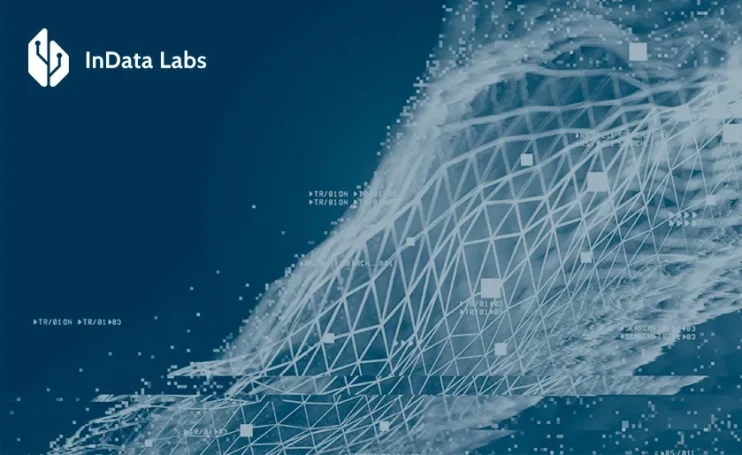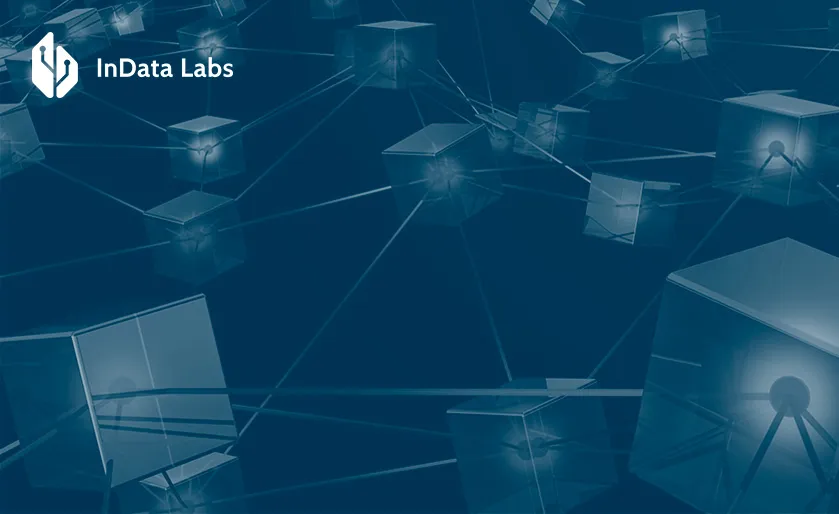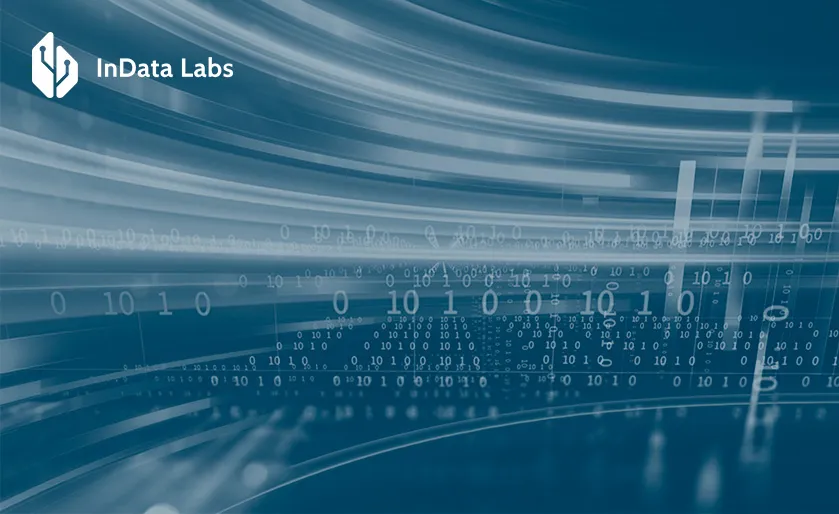In the modern world, where Big data is essential in nearly every field, data evaluation has become a crucial factor in understanding and following Big data trends. The examples of Big data lead us to conclude that it will continue to be an indispensable component for success, giving businesses Big data opportunities.
According to the statistics, the Big data growth market will likely achieve $103 billion by 2027. Such a prediction assures companies of a rapidly accelerating demand for Big data development solutions. What is no less vital is that more frequently, enterprises are embracing this branch of decision-making.
For instance, Big data business analytics and services are adjusting the strategies of achieving better results and bringing about the long-term goals, transforming the process itself to positive outcomes.

Source: Unsplash
As businesses generate increasing amounts of data, it is more meaningful to manage and analyze this data effectively. This article will focus on the top technology Big data trends in 2025, highlighting current and emerging trends in Big data that will influence the forthcoming operation of data analytics. We will also discuss how these trends are transforming the industry, influencing business strategies, and providing new possibilities for social influence.
From progress to AI to the growing role of data governance, these Big data latest trends give a glimpse of the future of Big data, Big data business services, and an extensive technical landscape. So, what are the main trends in data?
The integration of artificial intelligence and Big data
Data analytics initiatives are taken based on significant data industry trends. Meanwhile, merging artificial intelligence and machine learning has become a trend in Big data analytics as well. A large number of AI companies help businesses work better, find mistakes in large data sets, forecast patterns, and examine Big data market trends and client tastes.
Such an impactful prediction is constantly evolving, and the automation affects data quality itself. This evolution not only elevates operational outputs but also gives deeper insights that were previously inaccessible due to restrictions on traditional data methods. Here’s more to learn about advanced data analytics:
AI-oriented analyses will occupy the center of the stage, assisting organizations in automating data processing, improving decision-making, and providing future results with greater accuracy.
Despite problems with governance and bias, companies are still willing to derive outstanding opportunities from Big data and all the benefits of Big data analytics in their workflows. As these high-tech innovations continue to advance, companies will be better positioned to anticipate market changes and perfect customer experiences, reinforcing their outsmartings.
Live data proceedings and analytics
Live data proceedings and analytics are another recent trend in Big data. Because of the fact that businesses are more data-driven nowadays, the need for insights over time is increasing. Companies are shifting from old processing methods to real-time analytics, which gives them the capability to base their strategic choices on up-to-the-minute and updated data. This shift allows businesses to stay sharp and adaptable, guaranteeing that choices are grounded in the freshest and most pertinent details available.

Source: Unsplash
This trend in Big data analytics is especially seen in industries such as finance, retail, and the medical realm, where the ability to work quickly is more essential. Within the realm of financial markets, for instance, immediate information can assist merchants invest in market activities, while in the healthcare industry, medical professionals can enable them to provide immediate care based on patient information.
It is obvious that such Big data financial services and market analysis trends are not going to stop; they will only succeed. An increasing number of organizations recognize the significance of rapid, actionable insights. Therefore, they will relentlessly pursue innovation and refinement of their analytics workflows to secure a distinct advantage within their respective industries.
The growth of peripheral computing for data processing
One of the modern industry trends is the expansion of peripheral computing for data processing, and it also refers to the next big thing in data science. Peripheral computing allows data to be processed closer to the source, reducing the need for data to travel to centralized cloud servers.
As the Big data analytics market trends go on to evolve, edge computing is emerging as a key enabler of existing and next-generation data processing. By handling data within their own systems, companies can enact swift judgments, bypassing the lag common with cloud services and ultimately achieving quicker understanding and responses.
By maximizing the processing pace and lessening bandwidth costs, businesses won’t fail to be in stagnation, and they will increase data security. This not only improves processing speeds but also decreases bandwidth costs and boosts data security.
As a consequence, corporations transmit less data to the cloud and diminish outlays at the same time. Trending in Big data high-tech has been changing to more decentralized architectures, and edge computing is set to become a vital element, facilitating quicker and more streamlined data and qualitative analysis.
Improved plunge in data privacy and security
The amount of data today is much greater than in previous years. The most fundamental of the current and future Big data trends is data privacy and security. Companies deploy and store data for various types of projects, including software engineering, AI software development, and many others. Thus, the client’s trust comes first, as everyone is concerned about personal data, which subsequently builds a long-lasting and trusting relationship with the organization.
Nonetheless, the value of compliance with rules and regulations proves that the importance of confidentiality is an integral part of the policy of all successful companies. In accordance with these standards, cybersecurity threats are significantly minimized, as strong and reliable protection will not allow information leakage.
Such a primary feature also significantly affects internal violations and data failures. It is this trend in Big data that sometimes has a fateful impact on the further advancement of a business and its success in general. Much work on the potential of safeguarding has already been carried out, and it will always be in the first place of any company approaches.
Data management and data quality priority
Nowadays, businesses are more frequently than ever dependent on information to guide important decisions and solve different problems. The core data initiatives of 2025 also include data management, as guaranteeing the precision, uniformity, and dependability of this information is now a key focus.
For the last few years, the management and quality of data have represented not only day-to-day operations but also essential strategic goals for bolstering confidence, adhering to regulations, and reaching a market edge.

Source: Unsplash
Data stewardship is set to maintain and designate distinct accountability for data correctness and protection internally. We can see how one follows from another; for example, the responsibility of data directly modifies company rules for a better way.
Consistent procedures foster defining standardized guidelines for data input, preservation, and manipulation to prevent discrepancies. In spite of governance, regular assessments have been widely applied to check the quality of data. Performing scheduled evaluations is necessary to pinpoint and address data problems in advance.
Realization of cloud and hybrid cloud approaches
With the sheer scale and intricacy of information expanding, organizations are increasingly avoiding dependence on just one cloud vendor. The usage of cloud structures is growing significantly, used internally by companies and also increasingly in the public domain.
The migration of information and applications to the cloud has appeared almost inevitable for quite some time, and the adoption of public cloud offerings remains a robust Big data trend in science. It is obvious that diverse cloud and mixed cloud approaches have evolved into essential elements of data governance, providing adaptability, protection, and dependability in general.
Employing several cloud platforms to house applications and information empowers businesses to capitalize on the unique strengths of each service. As for the hybrid cloud, its setup merges private and public cloud spaces, facilitating smooth connectivity and oversight.

Source: Unsplash
Yet, a contrasting development has arisen and led to cloud return. Moreover, it demonstrates a more sophisticated and considered approach to this latest Big data trend. Companies are strategically shifting particular workloads, notably large datasets, back to local data centers or private clouds, away from public cloud settings.
In these cases, the public cloud’s usage-based pricing can result in unexpected expenses, especially when demand surges. Certain businesses handling specialized data and subject to stringent regulations are also considering a return.
For instance, institutions in finance and healthcare are aiming to improve compliance and data control through precisely designed hybrid cloud setups incorporating a blend of cloud and local infrastructure.
Advancements in Data-as-a-Service (DaaS) business models
Navigating and interpreting vast quantities of information presents a considerable challenge in today’s Big data landscape. Data-as-a-Service (DaaS) has arisen as a groundbreaking approach and one of the new trends in Big data, empowering companies to leverage premium data without the burden of developing and supporting intricate systems.
This service functions as a cloud-based offering, granting organizations immediate access to both organized and raw datasets. As exemplified by the framework, it lets businesses utilize data similarly to essential services like power or water.

Source: Unsplash
DaaS is full of numerous prospective advantages for companies worldwide. The most remarkable is financial saving because this removes the requirement for substantial infrastructure spending, leading to lower day-to-day expenses. The other pro is adaptability, which provides the capability to adjust data consumption according to changing business priorities and goals.
Furthermore, availability guarantees that teams in diverse settings can access reliable, current datasets. This recent trend in Big data is expected to experience substantial growth as more entities understand the advantages of adaptable and economical data solutions. A vast number of organizations are striving for greater flexibility in controlling their data environments and want to have such a fundamental change in their business to continue to maintain a competitive edge.
The growing popularity of open table formats
A significant and latest trend within the Big data environment is considered to be the increasing adoption and popularity of open table formats. The most prevalent of them is Apache Iceberg. However, there are other alternatives currently used nowadays; for instance, Delta Lake and Apache Hudi are accessible as well.
In correspondence with this, this format aims to handle extensive tabular data for analytical tasks using a consistent methodology. They are particularly useful in data lakes where substantial datasets must be stored, accessed, and modified effectively.
Nonetheless, the formats offer capabilities like interoperability across systems, transactional safety, and evolving schemas. The schema evolution aspect is notably crucial because it involves overseeing and adjusting data structures as they transform, ensuring data remains reliable and compatible.
Furthermore, open table formats lessen the chance of organizations becoming dependent on a specific vendor. Utilizing them allows companies to sidestep being constrained by a proprietary and frequently costly Big data platform due to the challenges of transitioning to a different setup.
Wrapping up
Thus, to summarize everything, we should first mark that the Big data trends in 2025 will be a transformative period for both businesses and societies as a whole. Big data is the future of all spheres and every kind of business domain. We see this widespread use and attentiveness to details of data operation now, and we are going to see them in the next years. At present, there are plentiful examples of trends in data that are constantly switching in order to make business run smoothly.
Whether it is data trends in analytics or trends in technology, every responsible company takes its initiatives following the analysis of future trends. As organizations increasingly approach Big data analytics services and use innovative technologies such as artificial intelligence, peripheral computing, and live data proceedings or data management, there are some obstacles they have to overcome, like protection of their data. It is a crucial point of utilizing Big data opportunities. But despite all these challenges, organizations are ready to keep up with the times and be a part of the time ahead.
Data privacy, security, and quality will remain key concerns as the volume and complexity of data continue to grow. To succeed in this computer-driven future, organizations must stay in front of the curve by embracing new technologies, securing data integrity, and promoting a culture of responsible data use.
Ultimately, the future of Big data in 2025 will be shaped by how well companies and societies navigate these trends and exploit the full potential of data analysis. The trends for large data will continue to develop and offer new opportunities for growth, efficiency, and social impact. As we go further, the ability to exploit Big data will be a decisive factor in success across industries and will transform how we live, work, and control.
FAQ
-
In today’s world, Big data denotes all kinds of data, including structured, unstructured, and semi-structured data, which undoubtedly comes to the assumption that it is and will be a compulsory component for success, giving businesses Big data opportunities.
In the modern-day world, brimming with Big data that is required in almost every area, data evaluation has ripened into a key phenomenon in knowing and following big data trends. As businesses generate increasing amounts of data, it is more meaningful to manage and analyze this big data effectively.
-
According to the newest statistics, the Big data growth market will likely achieve $103 billion by 2027. Such a prediction assures companies of a rapidly accelerating demand for Big data development solutions. What is no less vital is that more frequently, enterprises are embracing this branch of decision-making.
For instance, Big data business analytics and services are adjusting the strategies of achieving better results and bringing about the desired aims, transforming the process itself to positive outcomes.
-
The fusing of artificial intelligence and machine learning has become a trend in Big data analytics as well. A large number of AI companies help businesses to work better, find mistakes in large data sets, forecast patterns, and examine Big data market trends and client tastes. Such an impactful prediction is constantly evolving, and the automation affects data quality itself.
Live data proceedings and analytics are another recent trend in Big data. Because of the fact that businesses are more data-driven nowadays, the need for insights over time is increasing. Companies are shifting from old processing methods to real-time analytics, which gives them the capability to base their strategic choices on up-to-the-minute and updated data. This shift allows businesses to stay sharp and adaptable, guaranteeing that choices are grounded in the freshest and most pertinent details available.
The most fundamental of the current and future Big data trends is data privacy and security. Companies deploy and store data for various types of projects, including software engineering, AI software development, and many others. Thus, the client’s trust comes first, as everyone is concerned about personal data, which subsequently builds a long-lasting and trusting relationship with the organization.
-
Merging artificial intelligence and machine learning has become a trend in Big data analytics. A large number of AI companies help businesses to work better, find mistakes in large data sets, forecast patterns, and examine Big data market trends and client tastes. Such an impactful prediction is constantly evolving, and the automation affects data quality itself. This evolution not only elevates operational outputs but also gives deeper insights that were previously inaccessible due to restrictions on traditional data methods.
AI-oriented analyses will occupy the center of the stage, assisting organizations in automating data processing, improving decision-making, and providing future results with greater exactness.
Despite problems with governance and bias, companies are still willing to derive outstanding opportunities from Big data and all the benefits of Big data analytics in their workflows. As these high-tech innovations continue to advance, companies will be better positioned to anticipate market changes and perfect customer experiences, reinforcing their outsmartings.
-
One of the modern industry trends is the expansion of peripheral computing for data processing, and it also refers to the next big thing in data science. Peripheral computing allows data to be processed closer to the source, reducing the need for data to travel to centralized cloud servers.
As the Big data analytics market trends go on to evolve, edge computing is emerging as a key enabler of existing and next-generation data processing. By handling data within their own systems, companies can enact swift judgments, bypassing the lag common with cloud services and ultimately achieving quicker understanding and responses.
By maximizing the processing pace and lessening bandwidth costs, businesses won’t fail to be in stagnation, and they will increase data security. This not only improves processing speeds but also decreases bandwidth costs and boosts data security.
As a consequence, corporations transmit less data to the cloud and diminish outlays at the same time. Trending in Big data high-tech has been changing to more decentralized architectures, and edge computing is set to become a vital element, facilitating quicker and more streamlined data and qualitative analysis.
-
Definitely, it is. Big data is the future of all spheres and every kind of business domain. We see this widespread use and attentiveness to details of data operation now, and we are going to see them in the next years.
At present, there are plentiful examples of trends in data that are constantly switching in order to make business run smoothly. Whether it is data trends in analytics or trends in technology, every responsible company takes its initiatives following the analysis of future trends.
As organizations increasingly approach Big data analytics services and use innovative technologies such as artificial intelligence, peripheral computing, and live data proceedings or data management, there are some obstacles they have to overcome, like protection of their data. It is a crucial point of utilizing big data opportunities. But despite all these challenges, organizations are ready to keep up with the times and be a part of the time ahead.



